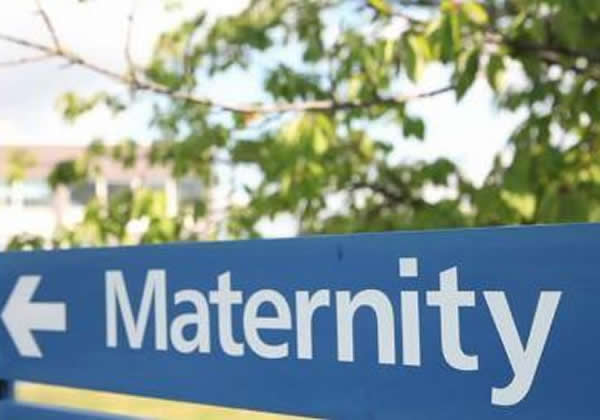Transcript – Water births
The use of birth pools for pain relief in labour is now very common, but you can also give birth to your baby in the water. and it’s estimated that up to 60,000 (9%) babies are born into water annually in the UK. Waterbirth refers to giving birth to your baby whilst in the birthing pool. Your baby is born under the water and guided or slowly lifted to the surface by you or your midwife, so that the first breath is not stimulated until the baby is out of the water.
Birth pools are most commonly found in birth centres, can be hired for home use and are also found in some hospital labour ward settings too. The pool tends to be used once you are in established labour. The pool will be filled with warm water around 37°C and should be deep enough that your bump should sit under the water. Waterbirths are a safe option for straightforward births, but if things are different for your pregnancy, you can talk to your midwife about having an individualised care plan that might involve water as an option.
Labouring in water has many benefits. Firstly, the warm water can be a good form of non-medical pain relief. it helps to relax your mind and ease tension in your body, which helps you cope with the pain. A large-scale study concluded that the pain-relieving effects of waterbirth are like the effects of pain relief injections such as morphine and a separate study found that nearly half of women reported that waterbirth is very helpful in relieving pain.
Being submerged in water gives weightlessness to your body and that helps with your ability to freely move, meaning you can find positions that are comfortable for you. This includes upright positions such as squatting or on all fours, which utilise gravity and help to move your baby down through the pelvis. Woman also report that labouring in water gives greater privacy and control over your birth experience, as more ‘handsfree’ care is adopted by the midwife. It means that you are less likely to experience multiple vaginal examinations or have an episiotomy. The use of water during labour is associated with positive birth experiences and high satisfaction with the level of care, meaning that in general woman who have used the birthing pools during childbirth have liked them.
Whilst you are in the water the midwife will continue to monitor your baby’s heart rate every 15 minutes with a stethoscope or a waterproof version of the hand-held device like the one used at your antenatal appointments. This can then be done without you needing to get out of the water. She will also monitor your temperature and the temperature of the water to ensure that you and your baby remain well. You can use gas and air to help with the pain whilst you are in the pool but if you require stronger pain relief you may need to leave the birth pool due to drowsiness. If you feel like you want to get out of the birthing pool, your midwife will support you in this at any point during your labour. In certain circumstances, you might need to leave the pool for the birth of the baby or the delivery of the placenta and your midwife will let you know if this is advisable.
In certain circumstances using a birthpool may be unsuitable for you or your baby, so you should speak your midwife if this is an option you want to explore. Your midwife will support you with information, discuss your options and provide advice on your individual situation.






